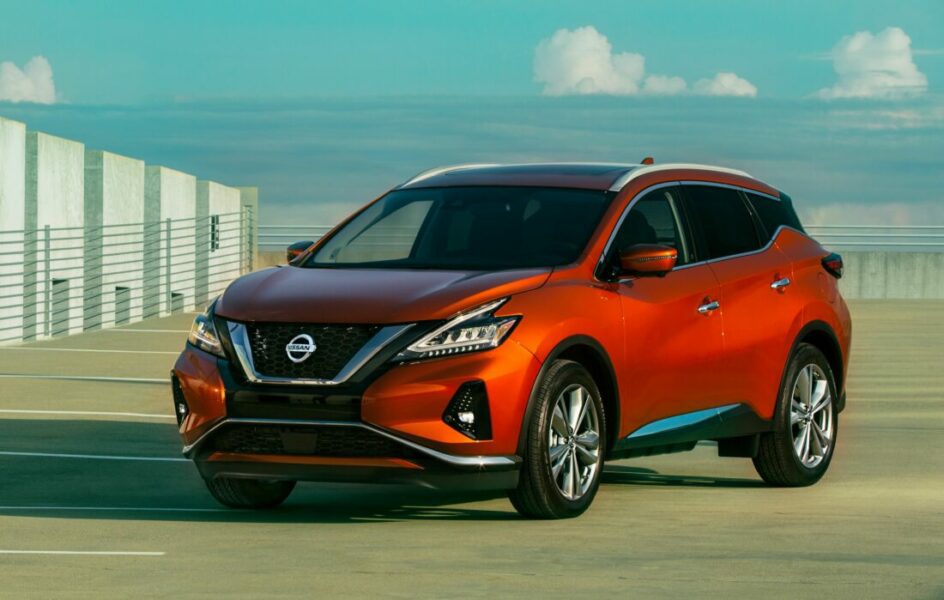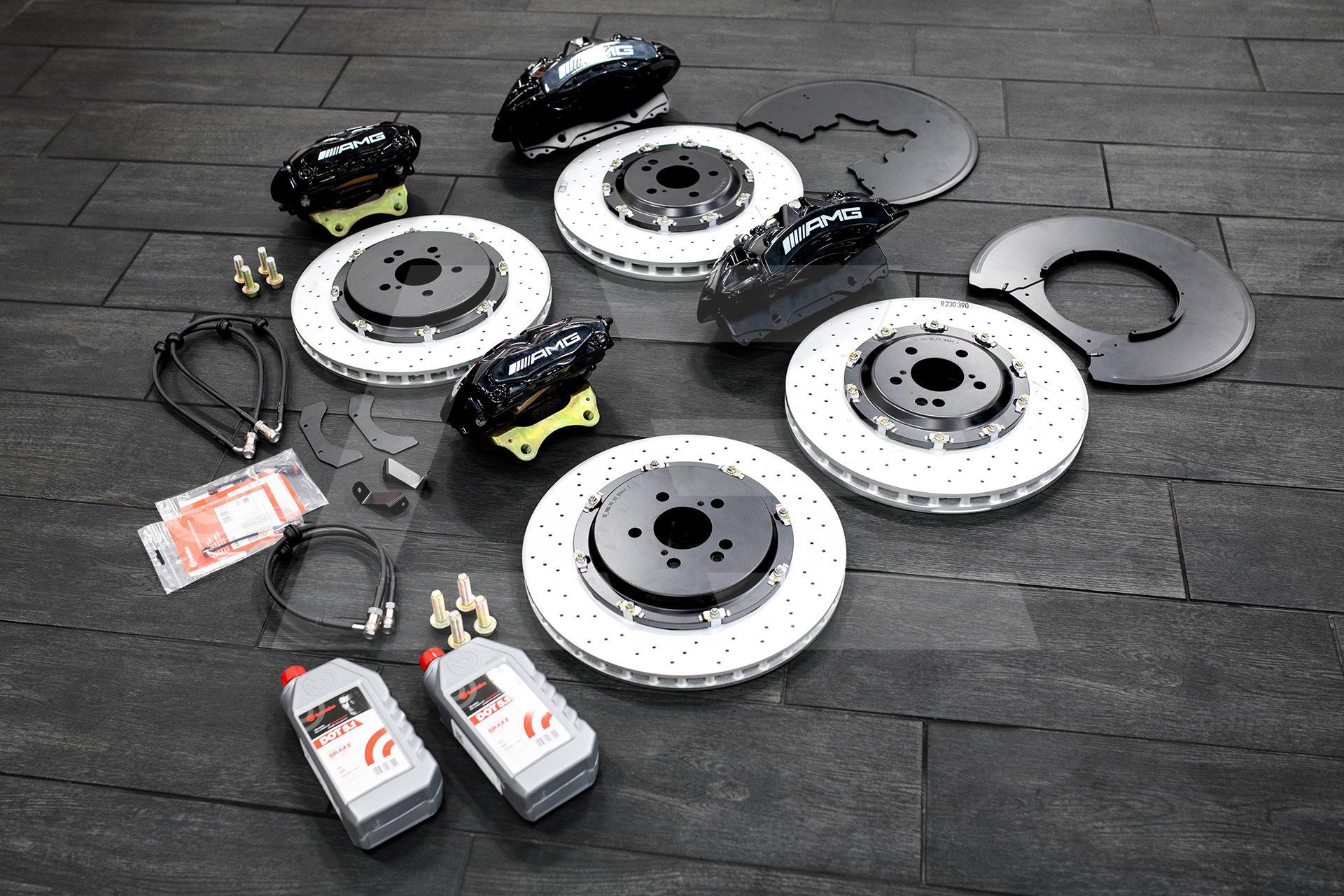
Nissan Murano
Content
Let's just take a look at the basic data: a three and a half liter six-cylinder engine, an automatic transmission, a dial showing just under two tones, and four passengers sitting comfortably in the car (yes, officially five, but not very comfortable in the back in the middle). The Murano has four-wheel drive, but no gearbox, and if you lean over and look at the underside of the car, you'll notice that it lacks serious off-road protection. ...
In short: it is not designed for off-road, but for comfortable cruising. It's also pretty good off-road, such as on gravel or even more slippery surfaces, but keep in mind that the Muran's all-wheel drive is not designed for off-road driving. Using a button at the bottom of the center console, you can lock the system (so that all four wheels run at all times), but that's about it.
Otherwise, the operation is hidden from the driver's sense of both pavement and slippery surfaces, but for the most part, the Murano understeers, and even a hard shove of throttle barely lowers the rear end. Since the steering wheel (by automotive standards) has no feedback and is rather indirect, chasing corners is not interesting - on the other hand, it is also true that this should not be opposed. Yes, the Murano loves to lean, but by city SUV standards, it still ranks as one of the best-handling and easy-to-handle cars of its kind around corners.
Of course, the soft chassis also has its advantages - most of the bumps under the wheels on the way to the driver (and passengers) simply disappear, only in some places a loud bang is heard from under the chassis (which is actually the only main dissatisfaction with this part of the car) sharp and a short bump shakes the cabin.
The choice of drive train also proves that the car is primarily focused on comfort. The six-cylinder 3-liter engine cannot be called completely new, it has been found in the cars of the concern (5Z, as well as Espace and Vel Satis) for quite some time, except that the engineers reconfigured the electronics. Thus, power and torque are always sufficient despite the large mass and large frontal area that the engine has to overcome, and the fact that maximum torque is available at (rather high) 350 rpm, which ideally disguises the CVT. CVT.
Its shifter can be left in the D position and you can enjoy a gear ratio range of 2 to 37, which is more than classic automatic transmissions, but you can move the shifter to the right and artificially add six preset gears to the transmission you you choose by moving the shift lever back and forth - but it's a shame that even here the engineers have changed the movements just the opposite.
Thus, in most driving modes, the engine will not operate at more than 2.500 or 3.000 rpm, and each harder pressing of the accelerator pedal causes the tachometer needle to approach 6.000 and above, while the engine emits (not too much muffled) growl. ... smoothly silently) and stays on until you release the accelerator pedal again.
But even though the engine (and chassis in general) is tuned more for comfort than average speed, Murano knows both.
The price you pay for this is called an average of 19 liters of gasoline consumed per 2 kilometers. For this class (both in size and in engine power) this is not so much, but we can safely call it above average. ... Even more alarming is the fact that there is only 100 liters of fuel in the tank, so the Murano has an unfavorably short range even at the lowest measured consumption.
Let's go inland. First of all, attention is drawn to the manometers of an unusual (and inconvenient) shape. Their irregular body gives the impression that someone at the last moment thought that it was necessary to install the sensors on the dashboard! That is why they are transparent, pleasantly illuminated with orange and generally pleasing to the eye. It's a pity that neither on them, nor on the large color LCD screen in the upper part of the center console, you can find not only an on-board computer (correct with displaying range, current and average consumption, etc.), but they themselves. I even forgot about the outdoor temperature display.
Nice thing, especially with a car worth 11 million. Well, at least the list of other standard equipment is rich. In fact, a potential buyer can't think much about accessories - everything that would be on the list of surcharges for many competitors is included as standard. Of course, there are all the safety accessories (for the abbreviations lovers, apart from the six airbags, let me list ABS, EBD, NBAS, ESP+, LSD and TCS, and for good measure, ISOFIX), the air conditioning is automatic. leather seats, electrically driven (with memory), electrically adjustable pedals (ensuring a comfortable driving position for all drivers), radio with CD changer (and cruise control) can be operated via steering wheel buttons, there's also DVD navigation with a seven-inch LCD color screen, bi-xenon headlights and more - Nissan's original list of standard equipment is printed on a single A4 page.
And when it comes to electrically adjusting the seat: in the Murano, everyone from the smallest to the largest can really easily find a great seat behind the wheel, it's just a shame the seats don't have better lateral grip. Even if the lengths sit in the front, there is enough space in the back, and in any case, the trunk is large enough to hide an additional box at the bottom, ideal for transporting more or less "bulk" cargo.
In short: there is no fear that you will miss something on Murano, but he knows how to get on the nerves of an experienced European driver, especially when he again and again cannot find the temperature outside, straining his eyes to see a very small hour. in the corner of the LCD screen) and calculates the consumption on foot. And given that all the "European" Nissan models (like the X-Trail and Primera) know this, it's clear that the Murano is American in essence and in origin - with all the (more) good and (very little) bad associated with it. qualities. . Some will appreciate it, and Murano will serve them well. Other. .
Dusan Lukic
Photo: Aleš Pavletič.
Nissan Murano
Basic data
| Sales: | Renault Nissan Slovenia Ltd. |
|---|---|
| Base model price: | 47.396,09 € |
| Test model cost: | 48.005,34 € |
| Calculate the cost of auto insurance | |
| Power: | 172kW (234 KM) |
| Acceleration (0-100 km / h): | 9,3 with |
| Maximum speed: | 201 km / h |
| Mixed flow ECE: | 19,2l / 100km |
Technical information
| engine: | 6-cylinder - 4-stroke -V-60° - petrol - displacement 3498 cm3 - maximum power 172 kW (234 hp) at 6000 rpm - maximum torque 318 Nm at 3600 rpm. |
|---|---|
| Energy transfer: | automatic four-wheel drive - stepless automatic transmission CVT - tires 225/65 R 18 H (Dunlop Grandtour ST20). |
| Capacity: | top speed 200 km / h - acceleration 0-100 km / h in 8,9 s - fuel consumption (ECE) 17,2 / 9,5 / 12,3 l / 100 km. |
| Transportation and suspension: | off-road van - 5 doors, 5 seats - self-supporting body - individual suspensions, leaf springs, triangular crossbeams, stabilizer - rear individual suspensions, multi-directional axle, coil springs, telescopic shock absorbers, stabilizer - front disc brakes (forced cooling), rear with forced cooling) - 12,0 m in a circle. |
| Mass: | empty vehicle 1870 kg - permissible gross weight 2380 kg. |
| Inner dimensions: | fuel tank 82 l. |
| Box: | Trunk volume measured using AM standard set of 5 Samsonite suitcases (total volume 278,5 L): 1 backpack (20 L); 1 × aviation suitcase (36 l); 2 × suitcase (68,5 l); 1 × suitcase (85,5 l) |
Our measurements
| T = 20 ° C / p = 101 mbar / rel. Owner: 55% / Tires: 225/65 R 18 H (Dunlop Grandtour ST20) / Meter reading: 9617 km | |
| Acceleration 0-100km: | 9,3s |
|---|---|
| 402m from the city: | 16,6 years ( 140 km / h) |
| 1000m from the city: | 30,0 years ( 175 km / h) |
| Maximum speed: | 201km / h (D) |
| Minimum consumption: | 14,2l / 100km |
| Maximum consumption: | 22,7l / 100km |
| test consumption: | 19,2 l / 100km |
| Braking distance at 100 km / h: | 39,7m |
| AM table: | 42m |
| Noise at 50 km / h in 3rd gear | 52dB |
| Noise at 50 km / h in 4rd gear | 51dB |
| Noise at 50 km / h in 5rd gear | 51dB |
| Noise at 50 km / h in 6rd gear | 51dB |
| Noise at 90 km / h in 3rd gear | 61dB |
| Noise at 90 km / h in 4rd gear | 60dB |
| Noise at 90 km / h in 5rd gear | 59dB |
| Noise at 90 km / h in 6rd gear | 59dB |
| Noise at 130 km / h in 3rd gear | 65dB |
| Noise at 130 km / h in 4rd gear | 64dB |
| Noise at 130 km / h in 5rd gear | 63dB |
| Noise at 130 km / h in 6rd gear | 62dB |
| Test errors: | unmistakable |
Overall rating (350/420)
Murano isn't for everyone, but it will impress a certain type of customer.
Exterior (15/15)
The modern, slightly futuristic look provides visibility.
Interior (123/140)
There is enough space and comfort, creaks on trifles.
Engine, transmission (38
/ 40)The six-cylinder engine can handle the weight of the machine easily, and the CVT combination is ideal.
Driving performance (77
/ 95)The Murano is not good at cornering, so it spoils itself on rough roads.
Performance (31/35)
Horses are always in short supply, but compared to the competition, Murano shows itself well.
Security (25/45)
There are tons of e-passengers taking care of safety.
Economy
The expense is high, so the price is much more affordable.
We praise and reproach
Equipment
comfort
feature
engine
no outside temperature sensor and on-board computer
sensor body shape
consumption
